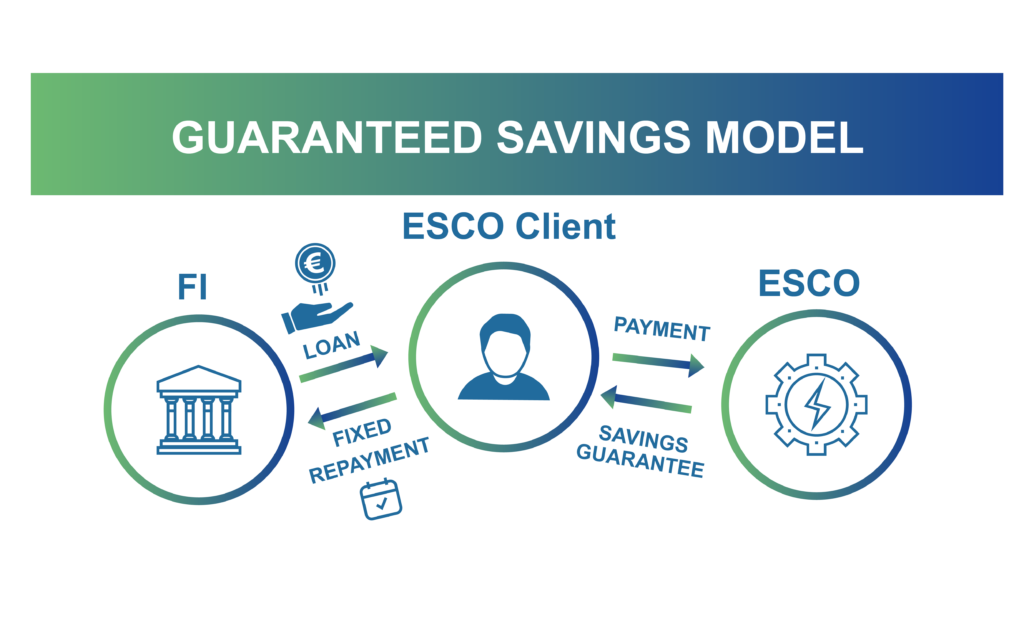Types of EPC contracts
Energy Performance Contracting (EPC) offers a flexible and effective framework for implementing energy efficiency projects, particularly in markets that are still developing, like Uzbekistan. Different EPC models cater to varying client needs and levels of market maturity, allowing for tailored approaches to energy savings. In the context of Uzbekistan’s emerging ESCO market, understanding these models is crucial for both public and private sector stakeholders.
This subchapter explores three primary EPC models: the Shared Savings Model (SSM), the Guaranteed Savings Model (GSM), and the Chauffage or Utility Purchase Agreement. Each model presents unique benefits and risks, making them suitable for different stages of market development. For an underdeveloped ESCO market such as Uzbekistan’s, starting with the GSM is recommended. This model reduces client risk by guaranteeing savings, making it an ideal entry point for building trust in EPCs. As the market matures, the SSM, where the ESCO and client share the savings, can be introduced, shifting more responsibility for financing and risk onto the ESCO. Finally, the Chauffage model, which involves the ESCO owning and operating the energy systems, offers another avenue for more advanced market engagements.
Shared savings model (SSM): In this model, the ESCO and the client share the cost savings achieved through energy efficiency measures. This approach is suitable for clients who prefer to reduce their upfront financial commitment, as the ESCO typically shoulders the initial project costs and recovers its investment through a share of the savings. In shared savings EPCs, cost savings (energy and O&M) from the project are shared between the ESCO Client and the ESCO.
- Arrangements vary, but payments to the ESCO may be a) a fixed percentage of savings, b) a minimum fee plus a share of the savings, or c) a scaled fee that decreases over time as the ESCO recoups its investment
- The ESCO typically provides the capital investment and assumes most of the risks
- Both the ESCO and the ESCO Client may see an additional monetary benefit if savings estimates are exceeded
 Guaranteed savings model (GSM): In this structure, the ESCO guarantees a certain level of energy savings, and the client pays the ESCO based on the achieved savings. This model is more attractive to clients who want to mitigate financial risks, as the ESCO assumes the risk of not meeting the projected savings. Guaranteed savings contracts are the most common form of EPCs and are used by governments. These contracts are characterized by:
Guaranteed savings model (GSM): In this structure, the ESCO guarantees a certain level of energy savings, and the client pays the ESCO based on the achieved savings. This model is more attractive to clients who want to mitigate financial risks, as the ESCO assumes the risk of not meeting the projected savings. Guaranteed savings contracts are the most common form of EPCs and are used by governments. These contracts are characterized by:
- A fixed term with a fixed payment schedule in which the ESCO ensures the savings (energy and O&M) will meet or exceed a minimum savings level (guaranteeing a minimum performance after implementation)
- Financing which is typically provided by the ESCO may also include capital investment from the ESCO Client
Chauffage or utility purchase agreements: Chauffage is a French word meaning ‘heating’ and is used to describe an arrangement popular with ESCOs in Europe and the USA. In this arrangement, the ESCO owns, operates, and maintains the energy-using equipment. The ESCO Client buys the end-use (e.g. heating, air-conditioning, lighting) for an agreed-upon rate and time. The ESCO may also negotiate with fuel and power suppliers to arrange purchase agreements and maintain those relationships and payments.
For an insufficiently developed ESCO market like Uzbekistan, it is recommended to first start using EPCs under the Guaranteed savings model until the private ESCOs turn to strong, trustful, and experienced companies, with good financial creditworthiness, ready and able to carry the project risks and to provide the performance guarantee for energy savings. Until then, they will not have access to financing in favorable conditions. Once the private ESCO market develops, the EPCs should be implemented under the Shared savings model, whereby the ESCO is responsible for the financing of the EE project.
